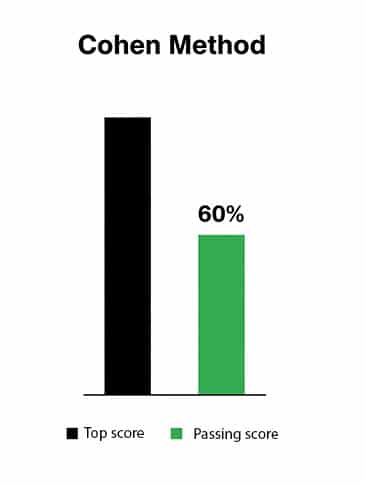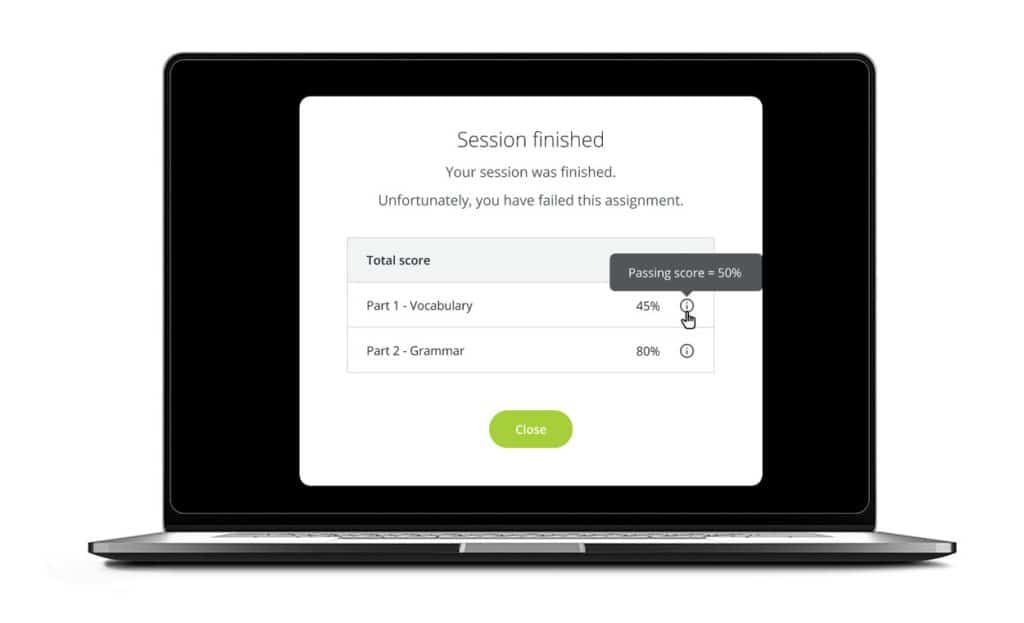
How to set a valid passing score for your exams
Have you ever questioned how to determine the passing score for an exam, whether it’s for school, admissions, or certification?
Setting the passing score is a critical part of testing, especially for certifications and licenses. The key takeaway? Arbitrary passing scores don’t hold up and can seriously weaken the credibility of the test.
What is ‘standard setting’?
 When we talk about standard setting, we’re referring to the process of determining the minimum score someone needs to pass a test. Simply put, it answers the question: “How well does a student need to perform to show they understand the material?”
When we talk about standard setting, we’re referring to the process of determining the minimum score someone needs to pass a test. Simply put, it answers the question: “How well does a student need to perform to show they understand the material?”
Traditionally, exam organizers use an absolute passing score, meaning a fixed percentage. For example, a candidate will need to answer 60% of the questions correctly to pass.
Methods
There are several well-known methods for standard setting, such as the Angoff, Ebel, and Bookmark methods. These approaches rely on expert judgment and are applied before the test is taken. However, they come with a few disadvantages:
- Time & cost: Assembling expert panels to set the minimum acceptable performance for each test item can be expensive and time-consuming, especially for in-house tests.
- Subjectivity: These methods can still be subjective, as they rely on human judgment. Experts may have varying definitions of a “minimally competent candidate” (Angoff), disagree on how to classify items (Ebel), or struggle with interpreting the item map (Bookmark).
The Cohen method can be considered as a smart alternative to costly and potentially subjective expert panels by relying purely on real test data.
What is the ‘Cohen Method’?
 The Cohen method sets the pass mark by looking at the scores of the best-performing students. For example, if you take the score of a top student (usually around the top 5%) and set the pass mark at 60% of that score, you automatically adjust for how difficult or easy the test is.
The Cohen method sets the pass mark by looking at the scores of the best-performing students. For example, if you take the score of a top student (usually around the top 5%) and set the pass mark at 60% of that score, you automatically adjust for how difficult or easy the test is.
This means that if a test is tougher, the pass mark drops to match the overall performance, and if it’s easier, the pass mark increases slightly. This dynamic approach helps make the test fairer for everyone.
Note that the choice of 60% isn’t random. It’s based on research from the early 2000s by Cohen-Schotanus and Van der Vleuten, who found that using 60% of the top performers’ scores creates a fairer and more meaningful standard than picking a percentage arbitrarily.
Cohen vs. Modified Cohen
Over time, educators made some tweaks to the original Cohen method to improve its fairness and accuracy. The modified Cohen method makes two key changes:
- It removes some of the adjustments made to account for guessing on multiple-choice questions.
- It shifts the reference point from the top 5% of scores to the top 10%, helping to create more consistent passing scores.
Both methods share the same basic idea – using the performance of the best students to set the passing score – but the modified version aims for a bit more stability and simplicity in everyday testing situations.
‘Passing scores’ in assessmentQ
Good news for educators using the digital exam platform assessmentQ: you can now adjust the passing score of a test even after candidates have taken it. This means you can apply the Cohen or Modified Cohen method to your tests.
Once the passing score is updated, the system automatically recalculates all reports and item analyses, ensuring that every result reflects the correct and fair passing score for that test.



